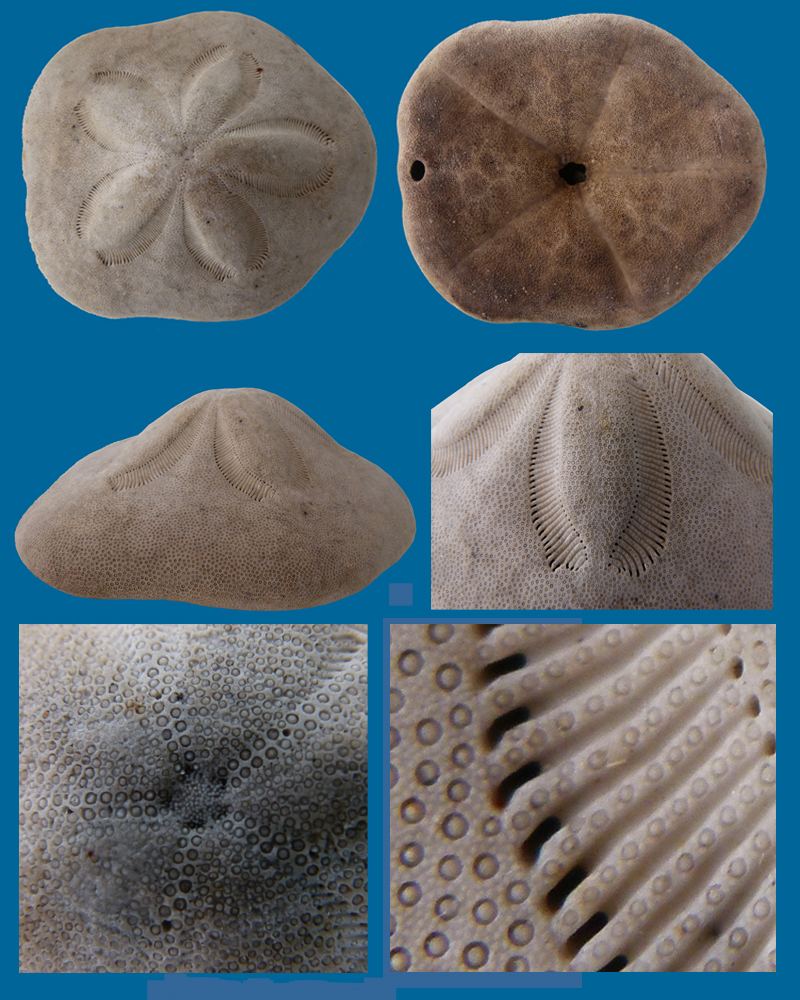|
Clypeaster species |
|
|
Family: Clypeasteridae |
Order: Clypeasteroida |
|
Locality: see below |
Dimensions: 144 x 124 x 51 mm |
|
|
|
|
During a cruise from South Africa to Europe in 2012 I had the pleasure to visit St. Helena Island in the South Atlantic for some hours. In a restaurant in the Castle Garden I saw some marine life souvenirs as decoration and especially some irregular sea urchins. I told a young lady that I wanted to buy one specimen. She answered that her father was the owner and she was not allowed to sell. But she phoned her father and surprisingly he adviced her to give it to me without any charge. Many thanks again! Unfortunately I forgot to ask for further details as locality. Thus I don´t know, if the urchin has been found in St. Helenas waters or elsewhere. The Clypeaster has a strong housing raising directly from the rim to the top, giving a montain like shape. Apically it is slightly sunken. The petals are broad and not completely closed. The interporiferous zones are elevated. The posterior petals have up to 48 pore pairs, the anterior ab. 40 pore pairs. The inner pores are small with a circular shape. The outer pores are conspicuously elongated. Ridges between the pores are set with a regular row with up to ten tubercles of same size. Sometimes single tubercles occur outside the row. The anal opening is transversely elongated and distant from the rim. The distance is about the opening´s diameter. Ridges with 10 tubercles are known from Clypeaster rotundus from the American West Coast. However, the complete appearance seems to be different. Clypeaster rangianus has a similar shape but only 6-8 tubercles on a ridge. That means, I could not find in my literature or the internet any descriptions fitting well. Even a high ranking American specialist in the field of Clypeasteroida was not able to tell me the correct taxon. So it remains an unknown and possibly a new species for me. In 2015 I had the opportunity for an unexpected further visit of St. Helena (the shipping company cancelled two African destinations because of the Ebola-disease). I met the owner of the restaurant and he told me, that the urchin was not from St. Helena. Longer time ago he got it as a gift from a French gentleman . Details remained unknown. |
|
